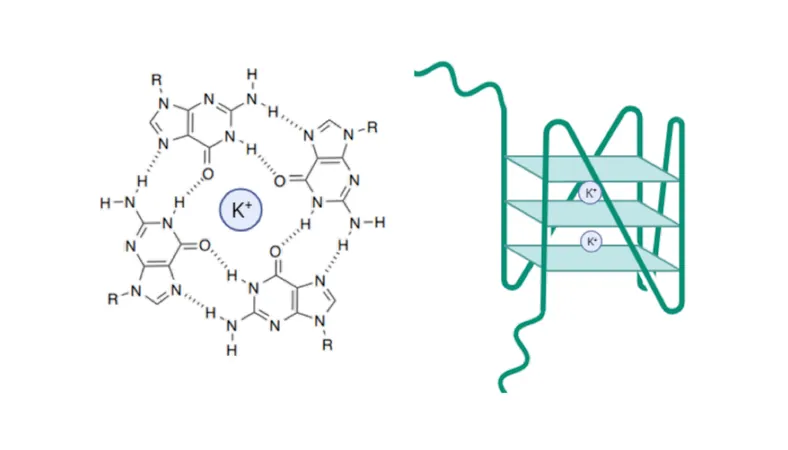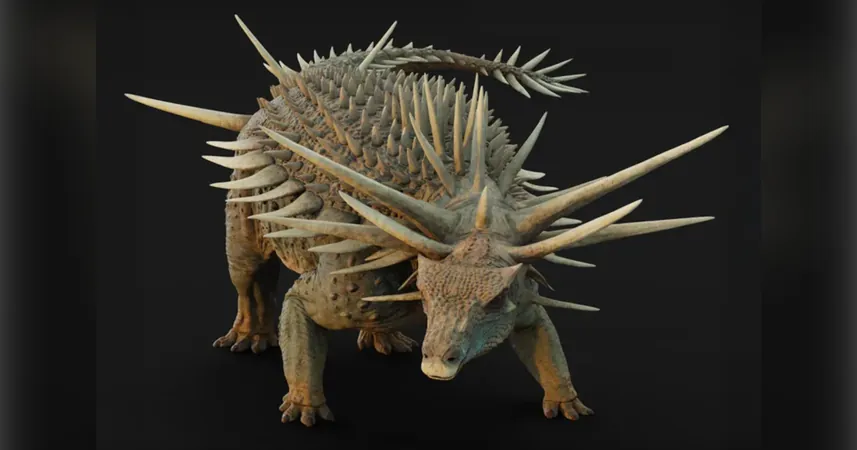
Unlocking the Secrets of DNA: How Archaea Reveal the Mysteries of G-Quadruplexes
2025-09-02
Author: Michael
Revolutionizing Our Understanding of Genetic Structures
In the grand tapestry of life, Archaea stand out as extraordinary microorganisms that thrive in some of the most extreme environments on Earth, including your own body! These ancient organisms are not just survivors; they are also the closest known relatives to eukaryotes—the complex life forms that include plants and animals. This proximity to more familiar life forms makes Archaea a compelling subject for research into the fundamental mechanics of DNA and RNA structures, specifically G-quadruplexes (G4s).
What Are G-Quadruplexes and Why Do They Matter?
G-quadruplexes are unique nucleic acid structures that have gained immense interest due to their significant roles in gene regulation and replication processes. While much has been learned about G4s in eukaryotes, their counterparts in Archaea remain largely uncharted territory. This study aimed to shine a light on these enigmatic structures within the archaeal domain.
Groundbreaking Findings: Over 5,800 G4-Forming Sequences Discovered!
In a pioneering genome-wide analysis of the halophilic archaeon Haloferax volcanii, researchers uncovered more than 5,800 potential G4-forming sequences. Through rigorous biophysical validation, many of these sequences were confirmed to adopt stable G4 structures, shedding light on their possible functions. These findings are particularly groundbreaking given that G4s had previously been underexplored in Archaea.
Visualizing the Invisible: G4 Structures in Action!
Using cutting-edge G4-specific detection tools and super-resolution microscopy, the team was able to visualize these fascinating structures in vivo, capturing G4s in both DNA and RNA during various growth phases. This marked a significant leap forward in our ability to study these mysterious structures within living organisms.
The Power of Comparison: Insights from Thermococcus barophilus
Remarkably, similar G4 structures were also identified in the thermophilic archaeon Thermococcus barophilus. Functional analyses further revealed helicase-deficient strains of H. volcanii, pinpointing candidate enzymes responsible for resolving G4 structures—an essential step for understanding how cells manage their genetic blueprint.
A New Frontier in G-Quadruplex Research
The establishment of Haloferax volcanii as a model organism for G4 biology opens new doors in genetic research, bridging gaps in our understanding of DNA/RNA structures across all domains of life. As we unravel these mysteries, who knows what additional secrets of our genetic past and potential future await us?
Dive Deeper: The Implications for Astrobiology and Genomics
This research not only enhances our understanding of archaea but also has profound implications in fields like astrobiology and genomics. As we explore life beyond Earth and delve deeper into the genetic codes that define life, studies like this could provide critical insights into the building blocks of life itself.









 Brasil (PT)
Brasil (PT)
 Canada (EN)
Canada (EN)
 Chile (ES)
Chile (ES)
 Česko (CS)
Česko (CS)
 대한민국 (KO)
대한민국 (KO)
 España (ES)
España (ES)
 France (FR)
France (FR)
 Hong Kong (EN)
Hong Kong (EN)
 Italia (IT)
Italia (IT)
 日本 (JA)
日本 (JA)
 Magyarország (HU)
Magyarország (HU)
 Norge (NO)
Norge (NO)
 Polska (PL)
Polska (PL)
 Schweiz (DE)
Schweiz (DE)
 Singapore (EN)
Singapore (EN)
 Sverige (SV)
Sverige (SV)
 Suomi (FI)
Suomi (FI)
 Türkiye (TR)
Türkiye (TR)
 الإمارات العربية المتحدة (AR)
الإمارات العربية المتحدة (AR)